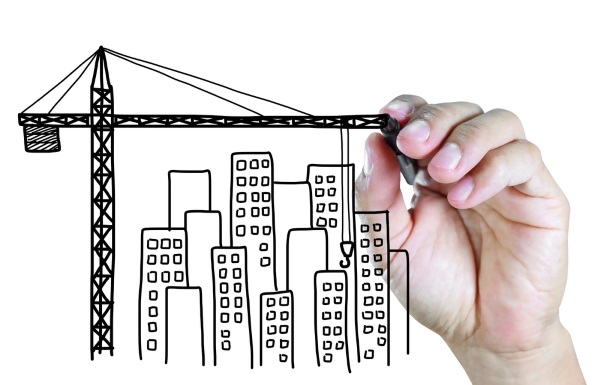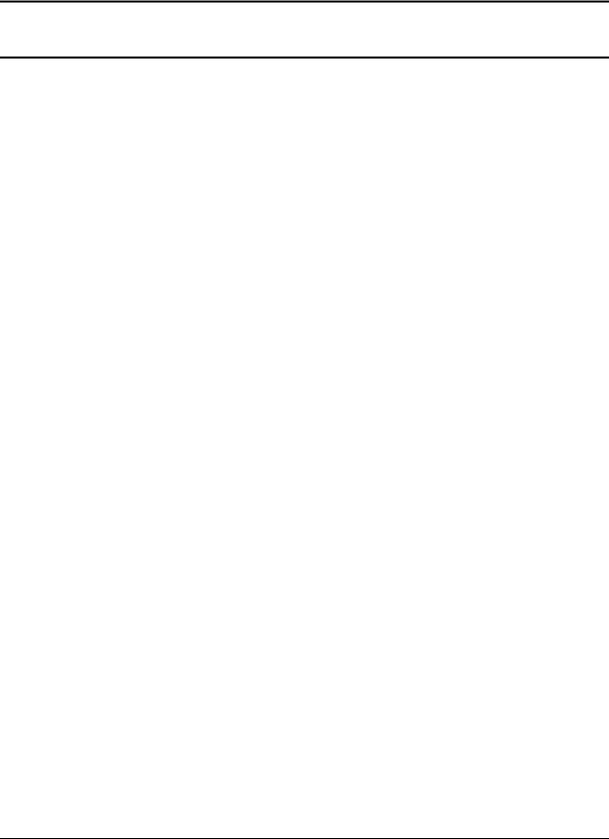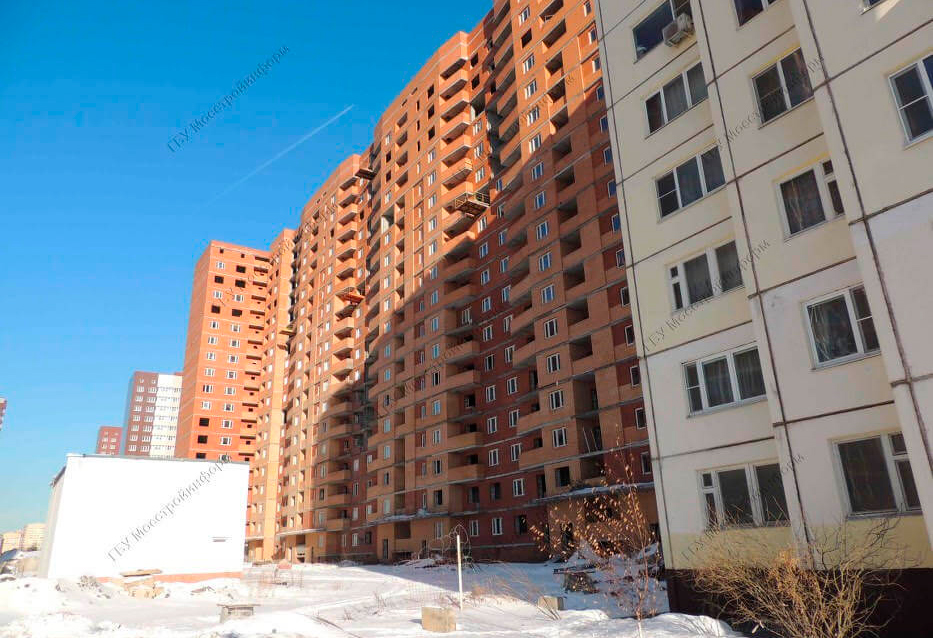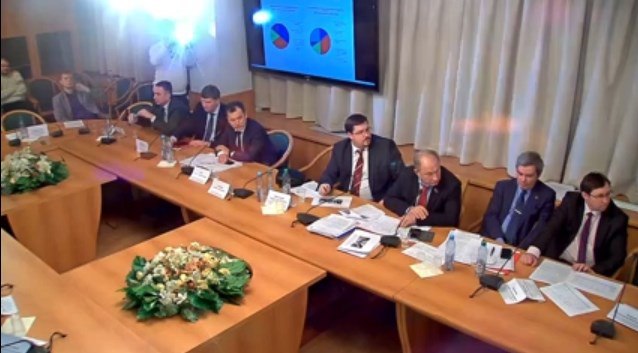Hi friends! Let's talk about money, languages, and seasons. Before going to Thailand, many people wonder how to bring money with them, is it worth going to Thailand with cash, or is it more profitable to keep money on a card. Some people are confused by the lack of knowledge of the language, as well as the fear of being in the country during the rainy season. In today's article I will talk about how to carry money, how to withdraw money in Thailand without a commission, when to go and whether to learn the language before a vacation in Thailand.
What money to take to Thailand?
The currency of Thailand is Thai Baht (THB). At the time of writing, the Thai baht rate is set in the following equivalent:
RUB —
0.94 baht
UAH —
2.79 baht
USD —
32.87 baht
EUR -44.74 bat
Cash in Thailand
All payments in the country are made in local currency - Thai Baht. If you plan to go to the popular resorts of Thailand - to Pattaya and Phuket - with cash currency, then you can take Russian rubles, dollars or euros with you. True, the exchange rate of the Russian ruble has recently been completely unprofitable.
If you plan a vacation on the islands of Koh Samui, Phangan or a trip around the country, then exchanging Russian rubles for local currency will be problematic. You should not carry large amounts of cash, because, despite the fact that Thailand is a fairly safe country, and most hotels have safes, anything happens, so it’s wiser to store part of the money on a card.
It makes no sense to take small money ($ 5, 10) with you, because the exchange rate for them is higher than for banknotes of a larger denomination. Better take bills for $ 50 or $ 100.
Plastic cards for Thailand
Before traveling, be sure to check with your bank to see if it blocks the card transactions made in Thailand. The fact is that Thailand is on the list of countries with an increased risk of fraud, so many banks automatically block cards in the Kingdom. You may have to write an application to open a special card maintenance mode. In Sberbank, such an operation is carried out by telephone. You just call the number indicated on the back of the card, listen to music for half an hour, and then, when the employee of the institution finally answers you, you say that you plan a trip to Tai, they say, you need to arrange a special service mode. In some banks, you can arrange a special mode online in your account.
In many supermarkets, cafes and hotels you can pay with a plastic card, but not everywhere. For example, in most 7/11 stores, Makro supermarkets, cheap food shops, scooter rentals and inexpensive bungalows, cards are not accepted. Also, if you pay with a Russian bank card in Thailand, another 3% will be added to the amount.
How to withdraw money in Thailand:
1. The easiest way: find any ATM (it says ATM), insert a card, enter a PIN code. Most ATMs charge a fee for every cash withdrawal. Previously, it was 150 baht, but before leaving Samui I took money from several ATMs, the commission was already 180 baht.
2. You can withdraw money in Thailand without a commission. To do this, find a cash desk or bank branch Krungsri (yellow), present your passport and card, wait a bit and get your money in baht without commission.
Thai ATMs have a cash withdrawal limit of between 20,000 and 25,000 baht at a time, depending on the bank. At Krungsri ATMs, a one-time cash withdrawal limit is set at 30,000 baht.
Bank cash desk Krungsri
Language in Thailand
Thai is spoken in Thailand. Many are embarrassed by the fact that they do not know English, so people buy travel packages at travel agencies, rather than organizing a trip themselves, while a self-organized trip could be much more interesting. If you are going to Thailand, don't let the language barrier stop you. Most Thais do not know English themselves. For example, when I had to communicate with Thais, I often understood them much worse than friends who did not know English at all, but skillfully spoke through facial expressions and gestures.
The rainy season in Thailand:
You can go to Thailand at any time of the year. Flights to Thailand are better to buy in advance, it will be cheaper.
A feature of the rest in the kingdom is that each resort in the country has its own season. Peak of tourism falls on December - March, when winter is in our latitudes. It is convenient that just during these months in Thailand wonderful weather reigns - the so-called “velvet season”, when the air temperature is quite comfortable (+28 - 30 C) and there is no rain. In April, the thermometer starts to rise, and the average air temperature during the day is +35 - 37 C. The sky is often overcast, sometimes it can rain.
 Koh Samui in the rainy season
Koh Samui in the rainy season The rainy season in Thailand conventionally lasts from May to early December, but each resort has its own climate. For example, at the beginning of December last year, there were rains on Samui every day, which could last an hour or two, but after December 10, it was as if someone had closed a large crane in the sky, and the rains stopped abruptly. At the same time, the sun was shining in Phuket since November.
 The sky in early December was overcast
The sky in early December was overcast Conclusion: What you need to know when traveling to Thailand:
Cash in Thailand is best carried in dollars, euros or rubles.
You can withdraw money in Talanda without commission at Krungsri bank branches.
The country speaks Thai, all signs are duplicated in English, and in popular resorts (Pattaya, Phuket, Samui) there are signs in Russian, the menu in restaurants is also in Russian, but the prices are noticeably higher.
Holidays in Thailand are possible at any time of the year, but from May to early December, the country has a rainy season.
It is most convenient to get from Moscow to Thailand by plane.
Article prepared by the author momondo.ru
Thailand: money, language, rainy season. Infa, without which in Tae not survive!
Reader interactions
Comments close 3 days after posting
Mila Demenkova
-
Alexei
Alexei
Alexei
Dmitriy
Triptorg
Alexandra
Alexei
In this article, we will talk about these frequently asked questions: “What should I bring dollars or rubles to Thailand with me?” and “Is traveling to Thailand better with cash or a card?”
So, let's start with the first question, dollars or rubles? I must say right away that in Thailand you can easily change both dollars and rubles to the local currency, which is called baht. However, with what currency, for which, it will be more profitable, let's understand. Of course, in Thailand, as in most other countries of the world, the dollar stands apart (this is still an international currency), and accordingly change the dollars ( especially face value of 50 or 100 dollars) on baht is more profitable than rubles. But is it worth it to change rubles to dollars first, and then dollars to baht, or is it better and more convenient to directly exchange rubles to baht, let's look at an example and see:
Let's say we have 30,000 rublesthat we want to take with us on a trip. Transferring this money into dollars at the current exchange rate (exchange rate for 07/22/2016 dollar - ruble: 1 - 64), we will get about 466 dollars, and transferring this money to baht (exchange rate on 07/22/2016 dollar - baht: 1 - 35), we get about 16,000 Thai Baht. And if you directly translate rubles into baht (exchange rate on 07/22/2016 ruble - baht: 1 - 0.55), then we will also receive approximately 16,000 Thai Baht.
Of course, these calculations are approximate, since each bank changes the currency according to its own conditions, but nevertheless, if there is a difference, then we think it is not so significant. As we saw, it’s not at all necessary to run, panic, look for a bank to exchange rubles for dollars in, but you can just take your rubles and go to Thailand!
Now let's look at the second question: “Is it better to go to Thailand with cash or a card?” In Thailand, as elsewhere, ATMs charge a certain percentage for withdrawals, and it is different depending on the ATMs and banks. So, for those who don’t really need to use the card, and who are traveling for a short period of time, take cash and relax yourself calmly, without clogging your brains with ATMs. But if you are going to Thailand for a long time or traveling in general, like us, or using a card is necessary for you, then you need to seriously approach the choice of cards that would suit all your conditions.
Now we will tell you what cards we got and why.
Asking the question, “which cards to get?”, We revealed for ourselves those basic functions of the cards that we will need on the trip:
- Free withdrawals at any ATM in the world;
- Free recharge cards;
- A higher percentage on the balance;
- Convenient mobile application and web banking with round-the-clock support.
After long-term monitoring and analytics, our choice fell on two banks (two cards, respectively): Tinkoff Bank and Rocket Bank. Now let's talk about each map.
Tinkoff Bank:
Here our choice fell on the map “Tinkoff Black PLATINUM world”, here is the information on it:
Use this link to order a card Tinkoff black platinum worldand get a lot of bonuses as a gift from us.
Rocket Bank:
Here our choice fell on a card with a tariff "Cozy space", a little about the tariff:

That's actually what we have sorted out with you. I hope everyone who has read this article has emphasized to himself that something is useful. In conclusion, I want to say that we are always happy to answer and advise you on all questions of interest. To do this, write comments, add to our social networks, we will be glad to see everyone! Oh yes, they almost forgot! We give you a link from Rocket Bank, by clicking on it, you can order a card (the same as ours), and at the same time get 500 rubles directly to the account, a trifle, but nice)
It is impossible to live even one day in Thailand without spending a certain amount of money. There are too many goods and services around, and smiling Thais seem so friendly that many tourists automatically reach for their wallet and pay, pay, pay ...
The national currency of the Kingdom of Thailand is Thai Baht (baht, thai baht, THB). In 2014-2015, the Thai baht to ruble rate was two to one, that is, 100 rubles now equals 50 Thai baht. Many tourists still remember the golden times (until 2013), when the ruble was equal to baht, and for 10-20 thousand rubles a month it was possible to rent decent housing in the resort, right on the seashore. Now, the amount in rubles has doubled. But back to the baht. The most popular bills in the country are 20, 100, 500 and 1000 baht. For example, twenty is considered standard for tips to a waiter, receptionist, massage therapist, casual assistant who prompted you the necessary information. Of course, no one will be offended by 100 baht, just keep in mind that twenty is enough. But paying with coins is advised to avoid, no matter how you would like to get rid of them. Coins of 10, 5, 2, 1 baht resemble banknotes: each banknote depicts a portrait of the monarch of the Land of Smiles (Rama of the Ninth). That is why money in Thailand must be treated with respect so that you are not accused of insufficient reverence for the king. You cannot step on banknotes and coins, tear them. Try to hand them over to the seller with respect. There are "pennies" in Thailand, their Thai name is Satang. One baht is divided into one hundred satangs, and if you were given yellow coins instead of silver ones for change, it means they paid you “pennies”. In ordinary shops, in transport and street shops, satangs are usually not accepted for payment. You can spend or exchange them for larger money in several places: this is a chain of stores 7-11, Family Mart and supermarkets Big C, Tesco Lotus and others.

Before the trip, tourists often decide in which currency to take money to Thailand. For those who are going to winter in this country or plan to stay for a long time, this issue is even more relevant. For the first time, you can stock up on a certain amount of dollars (from 100 to 1000) or euros. It is advisable to have both small and large bills, then you will be exchanged money in any branch of the bank. Rubles are not changing everywhere, but in large resort cities such as Pattaya, Phuket, Samui, you can easily part with rubles and get local currency. In the center of Bangkok, there will also be no problem exchanging rubles. Another convenient, but not very economical way to acquire Thai currency is to withdraw cash at any ATM on the street, in a shopping center or at a bank branch. 24-hour ATMs are easy to use, one of the Thai banks, Kasikorn bank, even provided the interface of all ATMs in Russian. With ATMs of other banks (Bangkok bank, Krungthai bank) will have to "communicate" in English. The only catch when withdrawing cash is a huge commission. Each Thai ATM will deduct 200 baht from you (and this is 400 rubles), and you will also have to pay a fee to the bank that issued your card. For example, if you withdraw 10 thousand baht, then in fact, 20 000 + 400 (commission of a Thai bank) + approximately 500 (commission of a Russian bank) are removed from your account in rubles, totaling about 21 thousand rubles.

In large supermarkets you can easily pay with any bank cards, so it is not necessary to have large amounts of cash with you. In a taxi, a counter is often used if the cost of the trip was not agreed in advance. The cost of a trip in large cities starts from 40 baht, in less populated areas, where taxi drivers have less competition - from 100 baht. The cost of food and drinks in numerous cafes and stalls on the streets usually varies from 10 to 100 baht. For travel by transport and small purchases, you need to carry bills of 20 and 100 baht with you, and travel in public transport often costs no more than 10 baht (so stock up on a few coins).
In some bank branches, tourists are allowed to open accounts with a passport and tourist visa for 3 or 6 months. If you work in Thailand and you have a work permit, then the first thing you should do is get a Thai card. Then you can forget about the fees for taking cash.
In Thailand, the local currency of Thailand, the Baht (THB), is accepted to pay for products and services. When traveling to the Kingdom, which currency do you prefer?
Modern Thailand: Exchange Rates for Today
Calculation in euros, dollars in Thailand is not carried out, with the exception of payment to the guides, guides who came to work in Thailand. Exchange rate for today:
- 1 USD - 36.1632 THB
- 1 RUB - 0.53395 THB
- 1 EUR - 40,7509 THB
Upon arrival at the airport, you can exchange some currency for small expenses. The rate will be acceptable, but you should not change all cash, in cities you can find the rate much more profitable.
Exchange points at hotels are not the best choice due to the understated rate. The ideal option is Exchange points or banks, which have branches in large supermarkets.
Important! Official exchangers often require a passport.
The currency of Thailand to the ruble: features of the exchange
Due to the weakening ruble against various currencies, the baht rate began to grow, approaching 1: 2. The currency of Thailand to the ruble for today is:
- 1 THB - 1.88 RUB;
- 1 RUB - 0.53 THB.
Please note: there is no direct exchange rate for the ruble. The conversion of Thai money into rubles is carried out through the dollar. It is difficult to find a normal ruble exchange rate in the Kingdom, except for one exchange point in Bangkok, one in Pattaya and a couple in the center.
Eliminate unnecessary searches of exchangers, take rubles with you only on the way back.
What currency is better to take to Thailand?
In Thailand, all exchange points freely exchange euros, dollars and about ten world currencies. The internationally accepted ratio of their courses extends to Thailand. At exchange points, the exchange rate may differ only by a couple of cents. So which currency to take to Thailand is more profitable?
The average Russian knows almost nothing about checks, but this is the most advantageous scheme for importing funds into Thailand. In Russia, checks can be purchased at Sberbank at face value and sold practically without loss in Tai. In checks you can bring substantially more money than cash.
When exchanging Thai baht, it is better to take small banknotes, since tuk-tukers need to be given a specific amount of the fare, otherwise you will not see the change.
The currency of Thailand to the dollar. Where is the best place to exchange?
The currency of Thailand against the dollar has been stable for more than 5 years. Now the rate fluctuates in the range of 34-36 baht per USD. When exchanging dollars throughout the Kingdom, there is a system of different rates for small, medium, large denominations of notes. One, two dollars - the cheapest.
It will be advantageous to take 50, 100 dollars with you. Large bills are popular, they are more expensive than small banknotes. Moreover, if the money is clean, not wrinkled and younger than 2001, you will earn on an exchange operation.
Banknotes are not broken at each exchange point, so if you have a paper of 100 USD, and you need to change 20 USD, then the branch employee will not give change - he will change everything.
Thailand. Which currency is more profitable when exchanging?
Going on a trip, tourists wonder what currency to take to Thailand. Which currency is more profitable?
There are many nuances when exchanging a dollar. Such subtleties you will not find anywhere else:
- banknotes with a date of issue after 2001 are subject to exchange at a high rate;
- intact, new bills are also accepted at a favorable rate;
- the most profitable exchange is the sale of banknotes of high denomination.
Consequently, dollars are more profitable to exchange in Thailand than the euro.
Coins of Thailand
In addition to banknotes, coins in denominations of 25 satangs to 10 baht are used in Thailand. 1 baht is equal to 100 satangs. Coins with a face value of 25 and 50 satangs are made of yellow alloy, 1, 2, 5 baht are made of nickel. Bimetallic coins have a value of 10 baht. Denominations of up to 10 satangs do not exist. They were released until 1987.
The reverse side of the coins depicts the sights of Thailand and national politicians. Coins of Thailand are used in the country for exchange. In addition to those that are in free circulation, there are also collection ones.
Banknotes of Thailand
Banknotes of Thailand are most often used in trade and when paying for services. Banknotes in the country have been issued since 1902. In 2012, 16 episodes appeared. The 15th and 16th series are still in use today. There is also a 13-series of banknotes, including commemorative notes - for occasions on holidays and anniversaries.
The main denominations of banknotes are 20, 50, 100, 500, 1000 baht. Satangs are issued only in the form of coins. Banknotes of different denominations and series vary in color. For example, green ones have a value of 20 baht, red ones - 100 baht. The largest can be gray or brown, depending on the release date.
Tipping in Thailand
Tipping in Thailand is given in restaurants and cafes, hotels, during or after excursions. Taxis usually don’t expect tips.
The average size is 10% of the cost of the service, as in the whole world. They do not require additional payment, even if it is accepted at the institution. So, in the restaurant you can give the standard 10%, if this is not included in the order price. At the hotel - for delivery of the parcel, assistance with luggage or small receipt - 20 baht is enough. In a taxi, tips are not accepted, but it is considered an ugly gesture to take a trifle from the driver. If you want to reward him, you can leave a little more - up to 40-50 baht.
Currency history
The history of the currency of Thailand began in the XIV century, to which the first mention of "baht" is attributed. At that time, the so-called Siamese tikal, which had circulation throughout Indochina. Until 1860, coins of silver and gold were minted here. They resembled small round ingots. The local currency gained its European appearance by the second half of the 19th century, and in 1898 the country switched to the decimal system of counting. The first paper notes in Thailand appeared in 1853. Until 1928, the main units were ticked, then renamed to baht. Since the beginning of the century, 16 series of notes have been issued.
Bitcoin in Thailand
Unlike many other countries, Thailand works not only with ordinary national currencies, but also with cryptocurrencies. In particular, here you can cash out "bitcoins".
Bitcoin in Thailand is exchanged not only at small exchange offices, but also at banks. To do this, it is enough to have access to your account in the cryptocurrency system and an identity document. Exchange rates vary from exchanger to exchanger, and the easiest way to cash out "bitcoins" in a banking organization. Here it is considered a completely legitimate deal and is not prosecuted in any way.
Traveller's checks / plastic cards
Going on vacation to Thailand (and especially to the popular resort in high season), you risk taking cash with you. The easiest and safest way to use traveller's checks / plastic cards. Even if they are stolen, they will not be able to use them, and you will not lose money.
Traveller's checks are not as convenient to use as a card, but they cannot be paid without your knowledge. If stolen or damaged, you can recover them for free and quickly. With a plastic card a little more convenient, but it requires more attention. Yes, you can block it right away, but you can only use the money stored on the account of a stolen or broken card with a high commission.











Learning environment: new projects A typical project of a school with 825 seats
A catalog of typical projects of social infrastructure buildings has been created in the Moscow region
A catalog of typical projects of social infrastructure buildings has been created in the Moscow region
Turnkey Cottage Construction Roadmap
The report of the head of the Ministry of Construction of Russia Mikhail I at a meeting of the Commission under the President of the Russian Federation on monitoring the achievement of targets of socio-economic development of the Russian Federation